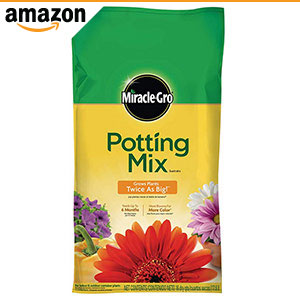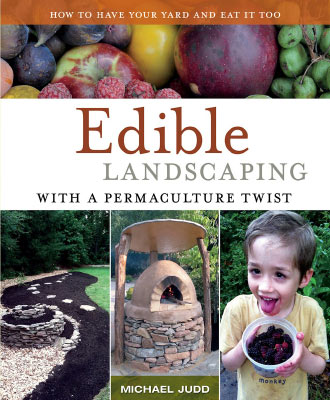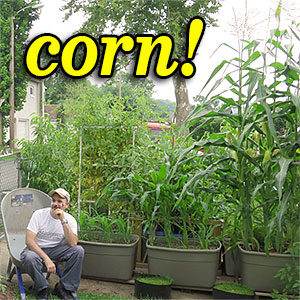SIPs:
Self-watering Garden,
Sub-irrigated Planters
Are you looking to combat severe drought using water conservation in your garden? Do you need to grow in a spot where you have literally NO soil? Or do you just want some really huge vegetables that are easy to grow??? Self-watering (wicking) beds or containers are a great solution. A DIY self watering garden is a water-wise system that will conserve water while growing huge plants!
Gardening with sub-irrigation is the process of watering plants from below the soil line. Through capillary action, the water then slowly rises upwards. For the process to work, the soil (potting mix) cannot be too dense or compact. It must contain air spaces that the water molecules can cling to as they rise. See SOIL for help with the proper ingredients.
- How Our Planet Captures Water
- How SIPs Work
- SIPs vs Hydroponics vs Wicking Beds
- Small Scale Sub-irrigated Planter Options
- How to Make an SIP Potting Mix
How Our Planet Captures Water
The surface of the Earth is riddled with massive underground water pockets. This water (known as an Aquifer) consists of permeable rocks that are saturated with water, like a sponge. Aquifers can feed springs, streams, lakes and wells. They can also supply water to plant roots if those roots are near the capillary fringe. The soil in a capillary fringe (which is above the water table) is kept moist by water that travels vertically due to capillary action.

Natural hydrological processes in the Earth's crust absorb water, allowing the upper soil layer to remain hydrated.
Our planet is full these large-scale water capturing systems. Precipitation is stored and then slowly released into the upper growing zone. This helps plants to withstand dry periods. Sub-irrigated planters use the same concept of capillary watering to keep vegetables hydrated. Wicking systems mimic (on a small scale) what we see happening everyday on our planet. Whether you buy one or build your own, it helps to see how a typical self-watering container is made. The video below can help you to examine how the various components of an SIP work together:
How SIPs Work:
Video: Self-watering Planter Basics:
DIY Gardening with Sub-irrigated Wicking Beds
This video is a perfect intro to the basics of how a self-watering SIP works. 
The water-reservoir is what makes the SIP such an asset to urban gardeners. Such a planter might be sub-irrigated only. A plastic cover would be placed on top of the soil to hold in moisture & prevent weeds. But if the cover is left off, then the SIP could be top-irrigated in addition to sub-irrigated. If it rains, that rain would be captured. Excess rain would filter down through the potting mix and into the reservoir.
Sub-irrigated planters can take a variety of forms. They can be used exclusively indoors, or designed for outdoor use as well. Outdoor SIPs will always need some sort of overflow tube to ensure that heavy rain events do not waterlog the soil. They need a water tight reservoir. And they must have a wicking medium.
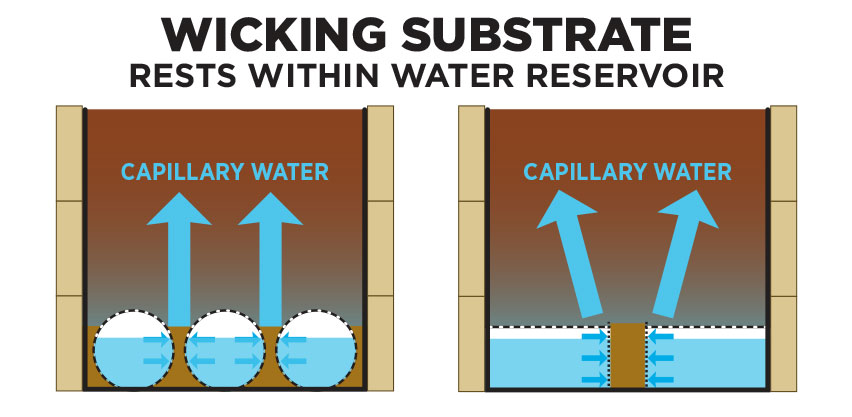
There are various methods for using wicking material to bridge the gap between the water reservoir & the active growing zone.
SIPs vs Hydroponics vs Wicking Beds
SUB-IRRIGATED vs HYDROPONICS? Sub-irrigation is not the same thing as hydroponics. It is not some sort of passive hydro system. Plants grown through "Hydroponics" receive all of their nutrients from a water solution. The soil is inert and provides little more than physical structure. The term "Sub-irrigation" describes a method for delivering water. A hydroponic setup might be sub-irrigated or it could easily be top watered instead. Your SIP system is also hydroponic, if you are feeding your plants with a complete nutrient solution.
WICKING BED? Another area of confusion is whether or not these systems should be referred to as "wicking beds". Some people attribute that term to a very specific design -a system that is built with gravel in its internal base. I do not prescribe to this rigid view at all. The term wicking bed is not a registered trademark. It is generic. And wicking planter designs have been in the public domain for a very, very long time. In fact, the concept is well over 100 years old! Just as there is no copyright for the term "garden bed". Wicking bed is a purely descriptive term. A "bed" (any garden bed) that vertically "wicks" (absorbs water through capillary action) is in fact a "wicking bed". Plain and simple. Of course, if you disagree then we can agree to disagree...
SELF-WATERING? Sub-irrigation or wicking systems are often marketed as "self-watering". Some people feel this is misleading terminology. To be truly self-watering, the system should store water and automatically add more upon demand. The process works even when you're away for a time. I've seen SIPs that include a float valve which recharges the water reservoir automatically. Such systems truly are self-watering!
Technically a gardener could devise a "self-watering" system that isn't sub-irrigated. Is a sprinkler or soaker hose considered a self-watering system? What about an electronically controlled ebb & flow set up? Technology has advanced to the point that electronic moisture sensors can send a signal to a computerized water timer which then activates your watering system as needed.
But SIPs are the ideal solution when dealing with containers. The water reservoir is placed directly below the soil container, merging it into a self-contained system. You water the reservoir (sub-irrigation) then the soil or a piece of fabric "wicks" up the water (self-watering) as needed. An air pocket separates the soil and water, allowing the roots to receive oxygen. It might seem complex, but trust me, this is easy gardening!
Small Scale Sub-irrigated Planter Options:
If you're in the market for a self-watering, sub-irrigated container, you have 2 initial choices: 1. Buy a retail kit, that has been tested & proven to work. 2. Build your own DIY kit, to the size & specs that best suit your needs. To help you evaluate your options, take some time to examine this chart of SIPs:
| SUB-IRRIGATED (SELF-WATERING) PLANTER COMPARISONS | ||||
| MODEL: | EXTERIOR: | HEIGHT: | SOIL CAPACITY: | DEPTH: |
| EarthBox | 29L x 14W | 3 gallons | 15 gallons | 7.5" |
| City Pickers (Emsco) | 20L x 24W | 2 gallons | 11.2 gallons | 6.75" |
| 30 Gallon SIP Tote | 30.5L x 20W | 3 gallons | 25 gallons | 11.5" |
Besides price, there are other factors when evaluating a self-watering system:
WHAT IS THE DEPTH OF THE GROWING MEDIA? This will have a large bearing on the types of vegetables you can grow. Don't expect to grow 8" carrots in a City Pickers that only gives you 6.75" of space.
WHAT IS THE SOIL SURFACE AREA OF YOUR SIP? A self-watering container with more surface area, might be a good choice for lettuce, spinach or strawberries.
WHAT IS THE SOIL CAPACITY OR VOLUME? Larger plants like tomatoes will need more growing medium to reach full potential. Also, plants that are heavy feeders may deplete the nutrients too quickly.
Those questions are probably a lot more crucial than the question of water capacity. A 2 gallon reservoir versus a 4 gallon won't have any impact on the productiveness of your plants. Of course, it might permit you to take a longer vacation without worrying about things drying out. Understandably, a larger reservoir will appeal to those "plant it and forget it" types. However, a vigilant gardener will still want to be outside looking over his or her plants each and every day.
How to Make an SIP Potting Mix:

These common potting mix substrate materials work great in SIP containers & beds.
There is no single right answer when formulating a growing substrate that works well in self-watering planters. But certain materials have been shown to hold up better after years of continuous use. I do not recommend using top soil which can include silt, clay or sand. Traditional potting mix substrates yield the best balance between wicking action and aeration.
Your potting mix formulation is absolutely critical if you hope to find success with your sub-irrigated planter. The chart shown below is simply an example of a potting mix that would do well for SIPs. This merely shows the type of components and a basic ratio for mixing them. There are many possibilities. The key is to select base components that are intended for container use as a potting mix. You can start with a retail potting mix and enhance it as desired. Or simply mix your own from scratch.
READ MORE: Best Potting Mix Ideas →

This sample recipe is an example of a typical DIY SIP potting mix. It contains Peat Moss, Coir Vermiculite, Perlite & Pine Bark Mulch.

At one point, EarthBOX had compiled a list of approved mixes. Their recommendation was "a peat-based (70%-80%) growing media that contains perlite or vermiculite. It should be light and fluffy when dry, and spongy when wet. It should NOT contain any rock, clay, or sand. You should also avoid using topsoil or compost."
The basic idea here is that you're constructing a mix that will effectively wick moisture to a vertical height of at least 14" (peat moss or coir). However, that same mix must be porous so as to provide proper aeration to plant roots (perlite). Also you should have enough drainage for excess rain water to escape down into the water reservoir.
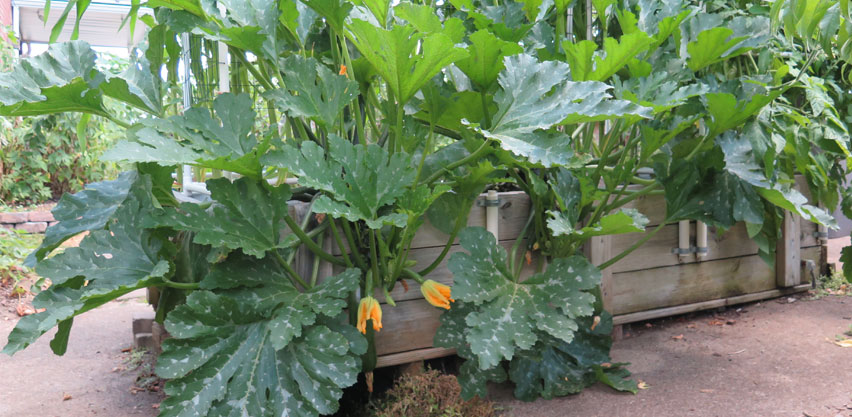
This single 4' x 8' SIP raised bed yielded 12 pints of sweet corn, 44 pounds of zucchini and 101 pounds of tomatoes.
Are you wondering how to fertilize such systems? Should you use compost? Read my multi-page article explaining the ins and outs of fertilizing SIP planters.
← READ MORE: Conventional Containers
READ MORE: SIP GARDENING: What to Expect →

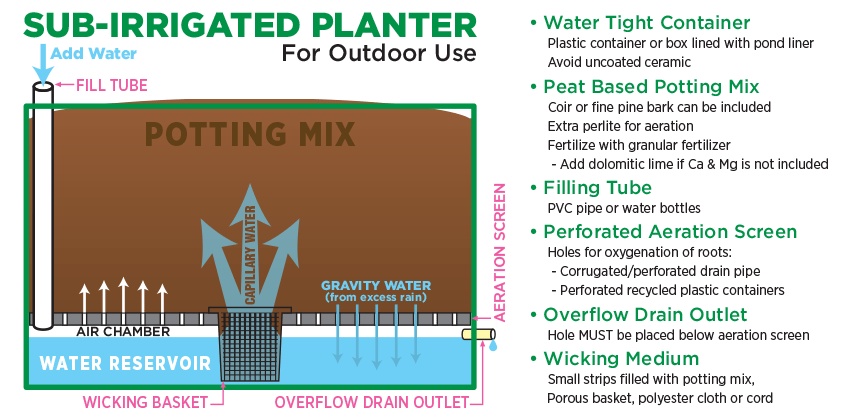


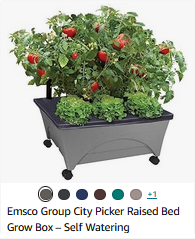

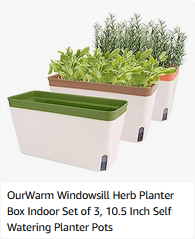

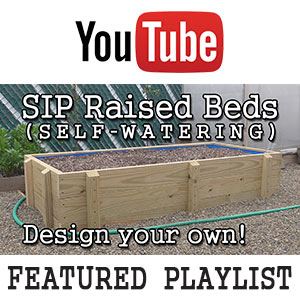
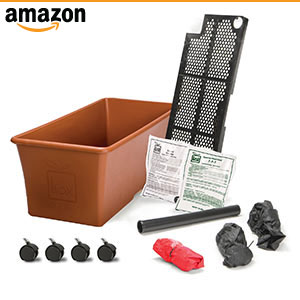
![Long Live PERENNIALS! [Gardening T-Shirt Design] Long Live PERENNIALS! [Gardening T-Shirt Design]](images/Long-Live-PERENNIALS-Gardening-T-Shirt-th.jpg)
